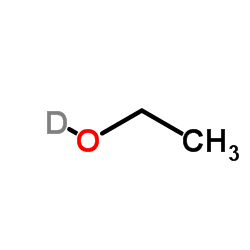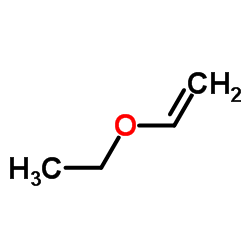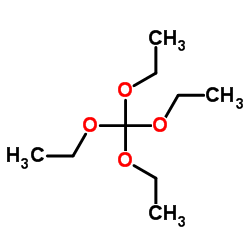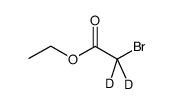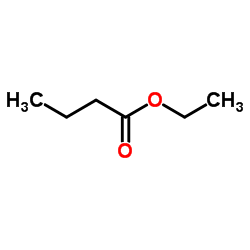925-93-9
| 中文名 | 乙醇-D1 |
|---|---|
| 英文名 | Methyl 2-(5-fluoropyrimidin-2-yl)acetate |
| 中文别名 |
氚代已醇
氘代乙醇 氘代乙醇-d1 |
| 英文别名 |
1,1,1,3,3,3-Hexafluoro-2-propanol-d(1)
O-deuterio-1,1,1,3,3,3-hexafluoro-propan-2-ol ethanol-O-d hexafluoroisopropan(ol-d) deutero ethanol ethyl alcohol-d O-deuterioethanol Ethan(H)ol Ethanol-d Hexafluorisopropylalkohol-d(1) ETHANOL-D1, (CONTAINS 5 PERCENT D2O) 1,1,1,3,3,3-hexafluoropropan-2-ol-d1 ETHYL ALCOHOL-OD EINECS 213-128-9 ethan[2H]ol ETHANOL D1 1,1,1,3,3,3-Hexafluoro-2-propan(ol-d) ETHANOL-D1 d-Hexafluorpropanol-2 MFCD00044669 ETHAN(OL-D) |
| 密度 | 0.8±0.1 g/cm3 |
|---|---|
| 沸点 | 72.6±3.0 °C at 760 mmHg |
| 熔点 | -130ºC(lit.) |
| 分子式 | C2H5DO |
| 分子量 | 47.075 |
| 闪点 | 8.9±0.0 °C |
| 精确质量 | 47.048141 |
| PSA | 20.23000 |
| LogP | -0.19 |
| 外观性状 | 无色液体 |
| 蒸汽压 | 82.8±0.2 mmHg at 25°C |
| 折射率 | 1.354 |
| 储存条件 | 保持容器密封,储存在阴凉,干燥的地方 |
| 稳定性 | 常温常压下稳定,避免空气和水分接触 |
| 分子结构 | 1、 摩尔折射率:12.84 2、 摩尔体积(m3/mol):59.0 3、 等张比容(90.2K):128.4 4、 表面张力(dyne/cm):22.3 5、 极化率(10 -24cm 3):5.09 |
| 计算化学 | 1.疏水参数计算参考值(XlogP):-0.1 2.氢键供体数量:1 3.氢键受体数量:1 4.可旋转化学键数量:0 5.互变异构体数量:无 6.拓扑分子极性表面积20.2 7.重原子数量:3 8.表面电荷:0 9.复杂度:2.8 10.同位素原子数量:1 11.确定原子立构中心数量:0 12.不确定原子立构中心数量:0 13.确定化学键立构中心数量:0 14.不确定化学键立构中心数量:0 15.共价键单元数量:1 |
| 更多 | 1. 性状:未确定 2. 密度(g/mL,25/4℃):0.806g/mL 3. 相对蒸汽密度(g/mL,空气=1):未确定 4. 熔点(ºC):-130°C 5. 沸点(ºC,常压):78°C 6. 沸点(ºC,5.2kPa):未确定 7. 折射率:n 20/D 1.359 8. 闪点(ºF):55°F 9. 比旋光度(º):未确定 10. 自燃点或引燃温度(ºC):未确定 11. 蒸气压(kPa,25ºC):未确定 12. 饱和蒸气压(kPa,60ºC):未确定 13. 燃烧热(KJ/mol):未确定 14. 临界温度(ºC):未确定 15. 临界压力(KPa):未确定 16. 油水(辛醇/水)分配系数的对数值:未确定 17. 爆炸上限(%,V/V):未确定 18. 爆炸下限(%,V/V):未确定 19. 溶解性:未确定 |
Synonym:Ethano Section 2 - COMPOSITION, INFORMATION ON INGREDIENTS
Risk Phrases: 11 Section 3 - HAZARDS IDENTIFICATION EMERGENCY OVERVIEW
Highly flammable.Flammable liquid. Potential Health Effects Eye: Contact with eyes may cause severe irritation, and possible eye burns. Skin: May cause skin irritation. Prolonged and/or repeated contact may cause defatting of the skin and dermatitis. May be absorbed through the skin. Ingestion: Cannot be made non-poisonous. Causes gastrointestinal irritation with nausea, vomiting and diarrhea. May cause kidney damage. May cause liver damage. May cause central nervous system depression, characterized by excitement, followed by headache, dizziness, drowsiness, and nausea. Advanced stages may cause collapse, unconsciousness, coma and possible death due to respiratory failure. Inhalation: Inhalation of high concentrations may cause central nervous system effects characterized by nausea, headache, dizziness, unconsciousness and coma. May cause respiratory tract irritation. Prolonged exposure may result in dizziness and general weakness. Chronic: Prolonged or repeated eye contact may cause conjunctivitis. Prolonged or repeated exposure may cause adverse reproductive effects. May cause liver and kidney damage. Section 4 - FIRST AID MEASURES Eyes: Immediately flush eyes with plenty of water for at least 15 minutes, occasionally lifting the upper and lower eyelids. Get medical aid. Skin: Flush skin with plenty of water for at least 15 minutes while removing contaminated clothing and shoes. Get medical aid if irritation develops or persists. Remove contaminated clothing and shoes. Ingestion: If victim is conscious and alert, give 2-4 cupfuls of milk or water. Get medical aid immediately. Do NOT induce vomiting. If conscious and alert, rinse mouth and drink 2-4 cupfuls of milk or water. Inhalation: Get medical aid immediately. Remove from exposure and move to fresh air immediately. If not breathing, give artificial respiration. If breathing is difficult, give oxygen. Notes to Physician: Activated charcoal does not reduce ethanol absorption. Section 5 - FIRE FIGHTING MEASURES General Information: As in any fire, wear a self-contained breathing apparatus in pressure-demand, MSHA/NIOSH (approved or equivalent), and full protective gear. Vapors can travel to a source of ignition and flash back. Use water spray to keep fire-exposed containers cool. Water may be ineffective. Material is lighter than water and a fire may be spread by the use of water. Flammable liquid and vapor. Vapors may be heavier than air. They can spread along the ground and collect in low or confined areas. May polymerize explosively when involved in a fire. Containers may explode when heated. Extinguishing Media: For small fires, use dry chemical, carbon dioxide, water spray or alcohol-resistant foam. Water may be ineffective. For large fires, use water spray, fog or alcohol-resistant foam. Do NOT use straight streams of water. Cool containers with flooding quantities of water until well after fire is out. Section 6 - ACCIDENTAL RELEASE MEASURES General Information: Use proper personal protective equipment as indicated in Section 8. Spills/Leaks: Absorb spill with inert material (e.g. vermiculite, sand or earth), then place in suitable container. Avoid runoff into storm sewers and ditches which lead to waterways. Clean up spills immediately, observing precautions in the Protective Equipment section. Remove all sources of ignition. Provide ventilation. Section 7 - HANDLING and STORAGE Handling: Wash hands before eating. Remove contaminated clothing and wash before reuse. Use with adequate ventilation. Avoid contact with eyes, skin, and clothing. Empty containers retain product residue, (liquid and/or vapor), and can be dangerous. Keep container tightly closed. Keep away from heat, sparks and flame. Avoid ingestion and inhalation. Do not pressurize, cut, weld, braze, solder, drill, grind, or expose empty containers to heat, sparks or open flames. Storage: Keep away from heat, sparks, and flame. Keep away from sources of ignition. Store in a tightly closed container. Store in a cool, dry, well-ventilated area away from incompatible substances. Flammables-area. Section 8 - EXPOSURE CONTROLS, PERSONAL PROTECTION Engineering Controls: Facilities storing or utilizing this material should be equipped with an eyewash facility and a safety shower. Use process enclosure, local exhaust ventilation, or other engineering controls to control airborne levels. Exposure Limits CAS# 925-93-9: Personal Protective Equipment Eyes: Wear appropriate protective eyeglasses or chemical safety goggles as described by OSHA's eye and face protection regulations in 29 CFR 1910.133 or European Standard EN166. Skin: Wear appropriate protective gloves to prevent skin exposure. Clothing: Wear appropriate protective clothing to minimize contact with skin. Respirators: A respiratory protection program that meets OSHA's 29 CFR 1910.134 and ANSI Z88.2 requirements or European Standard EN 149 must be followed whenever workplace conditions warrant respirator use. Wear a NIOSH/MSHA or European Standard EN 149 approved full-facepiece airline respirator in the positive pressure mode with emergency escape provisions. Section 9 - PHYSICAL AND CHEMICAL PROPERTIES Physical State: Liquid Color: clear, colorless Odor: Not available. pH: Not available. Vapor Pressure: Not available. Viscosity: Not available. Boiling Point: 78 deg C @ 760.00mm Hg Freezing/Melting Point: Not available. Autoignition Temperature: 363 deg C ( 685.40 deg F) Flash Point: 12 deg C ( 53.60 deg F) Explosion Limits, lower: 3.3 Explosion Limits, upper: 19 Decomposition Temperature: Solubility in water: miscible Specific Gravity/Density: .8010g/cm3 Molecular Formula: C2H5DO Molecular Weight: 47.07 Section 10 - STABILITY AND REACTIVITY Chemical Stability: Stable under normal temperatures and pressures. Conditions to Avoid: High temperatures, ignition sources, strong oxidants. Incompatibilities with Other Materials: Oxidizing agents, peroxides, acids, acid chlorides, acid anhydrides, alkali metals, ammonia and moisture. Hazardous Decomposition Products: Carbon monoxide, irritating and toxic fumes and gases, carbon dioxide. Hazardous Polymerization: Has not been reported. Section 11 - TOXICOLOGICAL INFORMATION RTECS#: CAS# 925-93-9 unlisted. LD50/LC50: Not available. Carcinogenicity: ETOH-D - Not listed by ACGIH, IARC, or NTP. Section 12 - ECOLOGICAL INFORMATION Other For more information, see "HANDBOOK OF ENVIRONMENTAL FATE AND EXPOSURE DATA." Section 13 - DISPOSAL CONSIDERATIONS Dispose of in a manner consistent with federal, state, and local regulations. Section 14 - TRANSPORT INFORMATION IATA No information available. IMO No information available. RID/ADR No information available. Section 15 - REGULATORY INFORMATION European/International Regulations European Labeling in Accordance with EC Directives Hazard Symbols: F Risk Phrases: R 11 Highly flammable. Safety Phrases: S 7 Keep container tightly closed. S 16 Keep away from sources of ignition - No smoking. WGK (Water Danger/Protection) CAS# 925-93-9: No information available. Canada None of the chemicals in this product are listed on the DSL/NDSL list. CAS# 925-93-9 is not listed on Canada's Ingredient Disclosure List. US FEDERAL TSCA CAS# 925-93-9 is not listed on the TSCA inventory. It is for research and development use only. SECTION 16 - ADDITIONAL INFORMATION N/A |
|
生态学数据: 对水是稍微有害的,不要让未稀释或大量的产品接触地下水,水道或者污水系统,若无政府许可,勿将材料排入周围环境
|
| 符号 |

GHS02 |
|---|---|
| 信号词 | Danger |
| 危害声明 | H225 |
| 警示性声明 | P210 |
| 危害码 (欧洲) | F: Flammable; |
| 风险声明 (欧洲) | R11 |
| 安全声明 (欧洲) | S16-S7 |
| 危险品运输编码 | UN 1170 3/PG 2 |
| 包装等级 | II |
| 危险类别 | 3.1 |
| 海关编码 | 28459000 |


